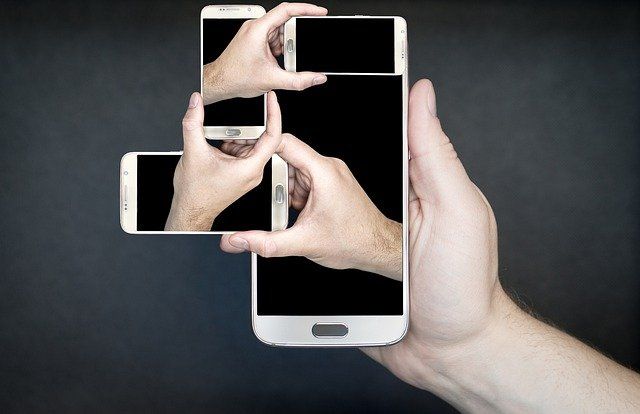Addressing Digital Addiction

When does an obsession with digital technology become a serious health problem? Digital technology has greatly enhanced our lives both inside and outside the workplace. But it is not all positive. Recently, when I was running a workshop, one of the participants (let’s call him Phil) had to excuse himself regularly from the room. My first reaction was that he had a weak bladder or an upset stomach. It was only later that I discovered he was suffering from Digital Addiction Disorder (DAD) or, in layman’s terms, the inability to stop looking at one’s iPhone or iPad. The workshop was a reflective one and I had requested that electronic equipment was not to be used in class. But Phil, physically unable to wait for a coffee break, was driven to leave the room whenever he felt compelled to check and respond to whatever messages were coming in.
In talking to him, I learned that Phil spent an extraordinary amount of time social networking, online gaming and visiting online bidding sites. What’s more, he was also addicted to watching YouTube video clips. When asked why he spent so much time on the internet, Phil noted that “being connected” had a relaxing effect on him. But, like many DAD sufferers, Phil’s excessive computer use had become uncontrollable and seriously interfered with his daily life.
Read Next: How The Most Productive People Avoid Digital Distractions
Digital dependence
In many ways, the symptoms of DAD resemble impulse-control disorders or even obsessive-compulsive disorders. Though prevalent in society, and emerging as a problematic phenomenon, DAD still needs a considerable amount of research. Studies of this disorder fail to agree whether DAD is a disorder in its own right or a symptom of other underlying conditions such as an obsessive-compulsive or impulse-control disorder. Whatever it’s called, DAD presents a compulsive behaviour pattern that can completely take over the addict’s life.
Although the idea of internet addiction is controversial and has not yet been officially recognised as a mental disorder, it is becoming a significant health threat, and the time has come to recognise it as a separate and distinct behavioural addiction. Surveys in the U.S. and Europe have noted alarming prevalence rates, ranging between 1.5 percent and 8.2 percent of the general population.
The estimates are even higher in Asia where 30 percent or more of the population are experiencing problematic internet use. (The wide variable differences in percentages can be explained by the fact that, as yet, there are no standardised criteria for measuring this addiction.) As a caveat, it should be noted that using the internet intensively does not mean that you are an addict or that you suffer from DAD. It only becomes a real disorder when it begins to seriously interfere with healthy functioning in your daily life.
Healthy functioning is based on the premise of balance. Digital addiction is comparable to addictions such as food or drugs in its obsessive nature. As is the case with all addictions, they influence the brain – both in the connections between the cells and in the brain areas that control attention, executive control and emotional processing. It triggers the release of dopamine, providing a temporary “high” on which addicts become dependent. Levels of dopamine and serotonin (another neural transmitter that helps to regulate mood) vary from person to person and we may hypothesise that people with a digital addiction have fewer dopamine receptors in certain areas of the brain or other kinds of impairment of dopamine functioning. Consequently, they have difficulty experiencing normal levels of pleasure in activities that most people would find rewarding.
To increase pleasure, DAD-prone individuals seek a greater than average engagement in digital activities that stimulate an increase in dopamine release, effectively giving them more rewards but also creating a state of dependency.
Read More: Attention! How You Can Stay Focused In A Digital World
A secret life
What kinds of people are more likely to become addicts? And what are the symptoms of people suffering from DAD?
Being stressed out or suffering from anxiety and depression can be a contributing factor in the development of addictions. In addition, people who suffer from DAD are often no strangers to other addictions such as alcohol, drugs, sex or gambling. People who have relationship issues also seem to be at a higher risk of developing an internet addiction. They use digital “connections” to boost their spirits and to escape from their problems. The time devoted to cyber-relationships comes at an expense of time spent with real people in their lives. In connecting with a virtual fantasy world, they have replaced the complexities and richness of real-life human connections.
Some of these addicts may even construct a secret life, creating alternate online personas in an attempt to mask unsavoury online behaviour. Many of these addicts (Phil being a good example) become quite restless, moody, anxious, depressed or irritable if blocked from their digital activities. Other DAD sufferers may suffer from physical symptoms such as having an upset stomach, headaches, eating disorders, backaches, poor personal hygiene, Carpal Tunnel Syndrome, neck pain, dry eyes and other vision problems, and sleeping disturbances.
Interestingly enough, when asked about their internet involvement, these addicts conceal the extent of their participation. But in their need “to connect” to strangers, they neglect family obligations, destroy their social life and lose out on the significant job, educational or career opportunities.
Finding balance
Unfortunately, the “cure”, as with most addictions, is an uphill struggle. Treatment is not straightforward, since most of us have to use the internet to some degree (or even a lot) on a daily basis. In that way, DAD is comparable to food addictions where it is impossible to quit cold turkey. Instead, addicts must learn healthy eating patterns and how to create a better balance. Some professionals have suggested that medications can be effective in the treatment of DAD. Their argument is that if those prone to this condition are also likely to suffer from anxiety and depression. If that’s the case (taking a psychopharmacological perspective), the use of anti-anxiety or anti-depressants is one avenue that has promise.
From a psychological point of view, cognitive-behavioural forms of therapy are frequently the treatments of choice. DAD addicts can learn to replace damaging thought and behaviour patterns that trouble them with healthier, more productive ones. In addition, mindfulness-based stress reduction training and group psychotherapy have proven to be helpful. Others suggest a multimodal treatment approach, implementing several different types of treatment (pharmacology, individual and group psychotherapy and family counselling) simultaneously.
Must Read: Design A Powerful Start to a Great Leadership Day
We have seen how the preoccupation with the internet has become the organising principle of some people’s lives. It is important, however, to recognise that their behaviour is also a warning signal: it symbolises a special kind of pain that begs for understanding. Only by helping the DAD addicts understand the nature of their pain, can we help them to recover.
Check out the video below on Technology Addiction and What you Can do About It by Ben on TEDxSaintThomas to understand how you can help with the addiction be it for yourself, your colleagues or anyone whom you care for, to achieve the richness of meaningful and genuine human connections in life!
If you enjoyed the article, continue your journey with us by checking out Necole, a state-of-the-art learning platform that curates personalised learning just for you! To find out more about necole, click here or email info@leaderonomics.com.

Personal
Tags: Personal Growth
Manfred F. R. Kets de Vries is the Distinguished Clinical Professor of Leadership Development & Organisational Change at INSEAD and the Raoul de Vitry d'Avaucourt Chaired Professor of Leadership Development, Emeritus.





